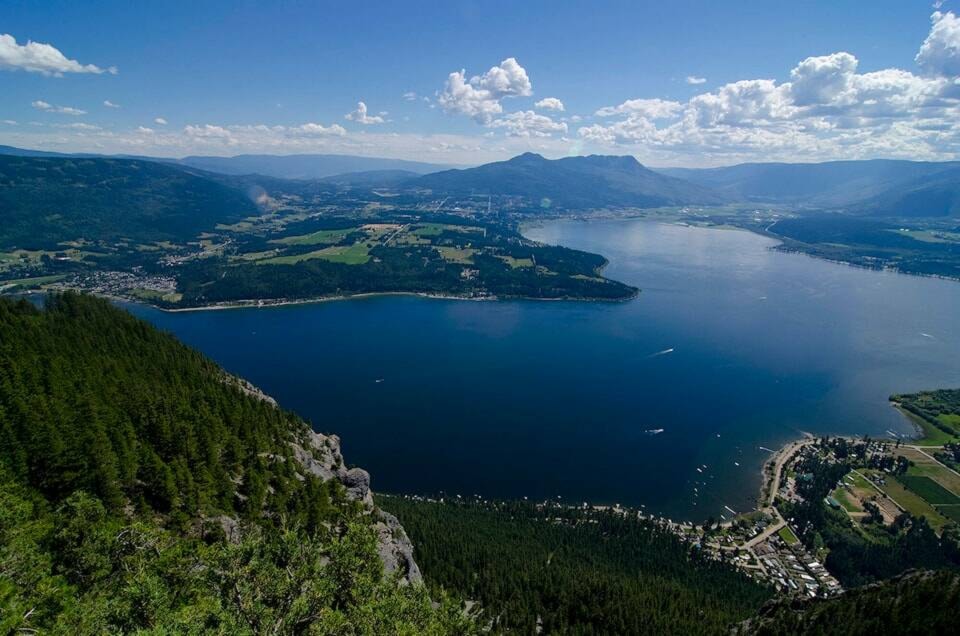By Barb Brouwer
Contributor
Eligible voters in the electoral areas of the Columbia Shuswap Regional District and District of Sicamous delivered a resounding “no” to supporting the Shuswap Watershed Council.
Results of the Jan. 29 referendum revealed 982 “NO” ballots that far outweighed the 364 ballots supporting contribution in the form of a parcel tax.
The CSRD is one of 20 members of the non-regulatory watershed council that also represents the City of Salmon Arm, District of Sicamous, Thompson Nicola Regional District, Secwépemc Nation, Regional District of North Okanagan and B.C.’s Environment & Climate Change Strategy, Forests and Agriculture ministries.
There are also three community representatives at-large and a senior scientific advisor.
In the CSRD, the Shuswap Watershed Council (SWC) is currently funded by parcel tax contributions from electoral areas C, D, E, F and G. The same funding formula applies also to the District of Sicamous. .
The parcel tax was originally established with a five-year sunset clause which ended in 2020. But the province did not want a referendum to be held during Covid so the CSRD was given an extension to 2023. Polls opened on Aug. 15, 2023 but voting was put on hold due to the Bush Creek East wildfire.
While mail-in ballots were fairly close, with 33 property owners voting in favour and 37 opposed, the Electoral Area C vote was 90 in favour and 982 opposed.
In Area E Rural Sicamous, CSRD director Rhona Martin said when poles opened last August, she received many emails and calls from constituents worried that meters were going to be installed on their private wells.
Martin said she thinks the amount of misinformation circulating in the region was a good part of the reason only 16 of her constituents voted in favour of funding the SWC, while 91 were opposed.
“I am extremely disappointed because we are facing some trying times ahead,” she said, pointing to last year’s extremely low water levels in Shuswap Lake and the South Thompson River, and the important value of the work being accomplished by the council. “There are a lot more voters, so to me, this turnout is a poor representation of what people actually think. It would cost owners about $10 a parcel and people spend that on coffee and a cookie.”
As she has in the past, Martin pointed out that, unlike municipalities who can add services as they see fit, electoral areas need to get public assent. Martin also noted that the council does more than collect data and has contributed to work on quagga mussels, the Kids Don’t Float program and public safety ads on radio.
“All we want is for people to come here, have a good time and go home safely,” she said. “There are some really good projects happening in partnership.”
Area G Blind Bay, Sorrento, Notch Hill director and CSRD deputy board chair Natalya Melnychuk said she is not surprised by the results.
Melnychuk described a “wide, outspoken campaign”of misinformation prior to voting day. As well as hearing about rumours on water metering, some of her constituents believed the parcel tax would cost thousands of dollars. Others said that protecting the watershed should be a provincial responsibility and the CSRD shouldn’t be meddling with it, but should do something about the state of area roads.
Melnychuk’s response is that roads are a provincial responsibility and not much is happening with them, while the Shuswap Watershed Council has been doing great work with data collection and grants for farmers and ranchers to reduce the nutrient loading.
Read more: Shuswap Watershed Council responds to public claims, criticisms
Read more: Shuswap Lake hits another record low, prompting boat launch closures
“It’s evident that the best way is to have boots on the ground when you need something looked after,” she said. “This doesn’t mean we can’t have a body that is looking out for water quality; now the council needs to regroup, where do we go from here?”
Jay Simpson, CSRD Area F director and chair of the Shuswap Watershed Council, called the results disappointing and agreed with Melnychuk that they are not unexpected.
“The future of the SWC is certainly in doubt. We have numerous partners who are committed to the organization, and have put money forward for it’s continued existence,” he said. “Unfortunately, the people of the CSRD are the largest funding partner and have decided to no longer contribute.”
Simpson said there will be conversations with the province, SWC’s partners in the watershed, and the various departments and agencies that contribute to the health and well-being of the lake and surrounding waters.
“It’s too early to determine what the outcome of those conversations will be,” he said. “We will explore all options to keep eyes on the watershed and advocate for it’s continued good health.”
Referendum results are expected to be discussed at the regional district’s budget meeting on Feb. 14, and on the agenda for the Feb. 15 board meeting. The public may attend both via Zoom or in person. Go online to csrd.bc.ca for more information about referendum results and how to link to the Zoom meeting.
